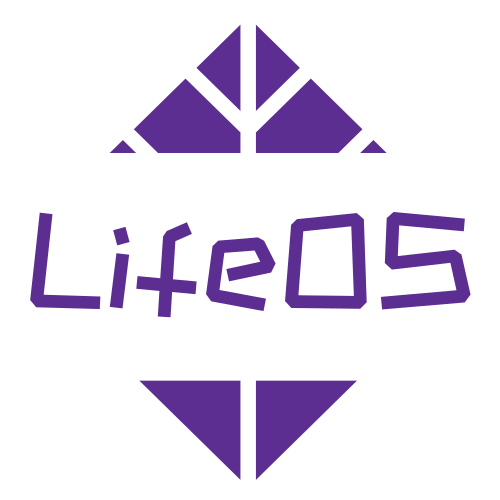Main System
LifeOS core adopts two systems: a knowledge management system and a periodic notes system. The former uses the PARA method, managing knowledge along the dimensions of "Projects," "Areas," and "Resources," while the latter uses time as a dimension, managing tasks/goals/time through logging "Daily notes," "Weekly Notes," "Monthly Notes," "Quarterly Notes," and "Annual Notes."
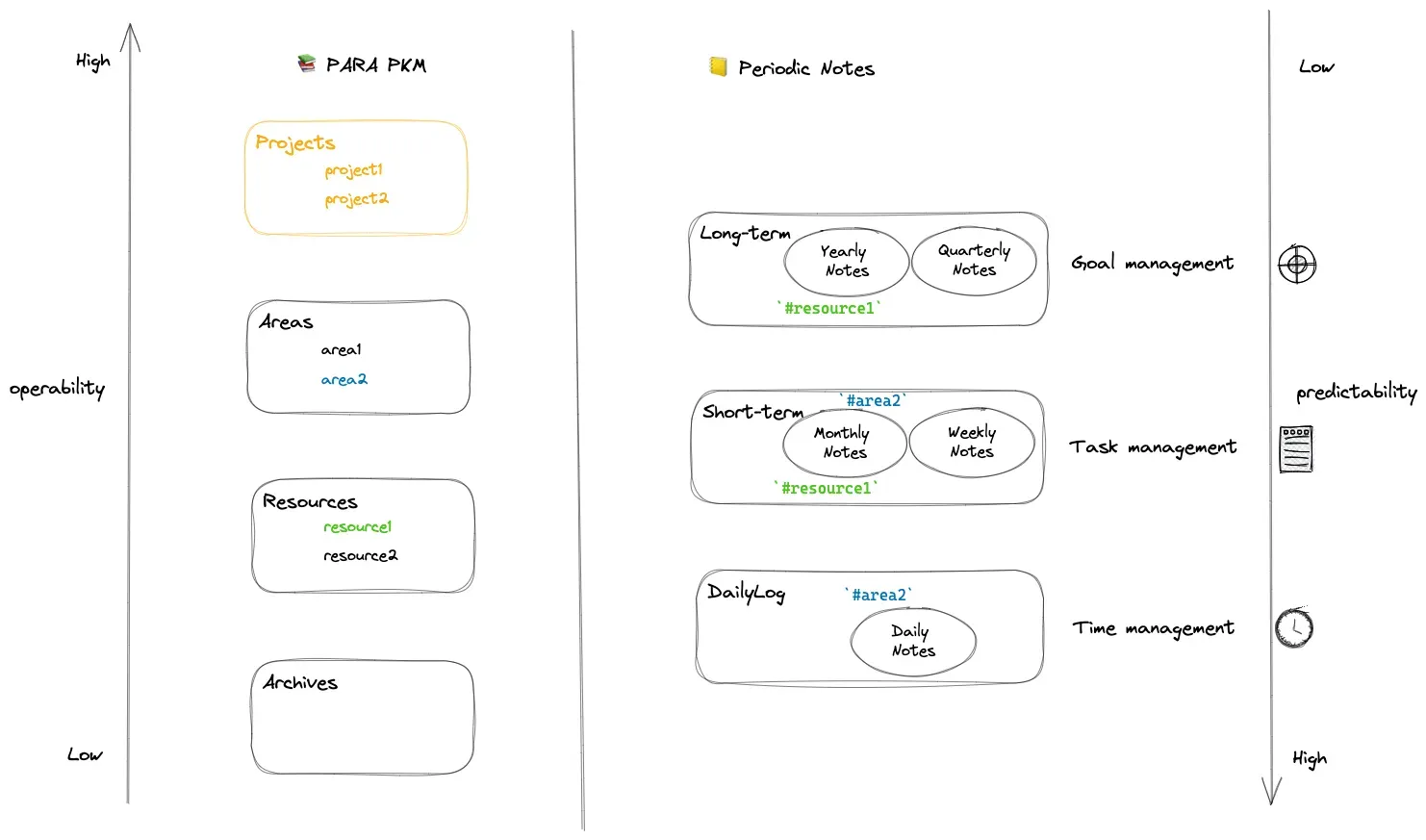
Figure 1
Knowledge Management System
From Figure 1, we can see that within the knowledge management system, from "Archives" to "Resources" to "Areas" and finally to "Projects," the operability of "knowledge notes" increases. What does operability mean? For example, compared to what's next in the "Parenting" area, the next steps for the "parenting-first-birthday-banquet" project are clearly more actionable!
PARA Notes System Example

Figure 2
Let's browse through the PARA notes system in the example template while referring to the official definition!
Projects
- Definition: A project is a series of tasks with specific outcomes and deadlines.
- Explanation: The two projects below have specific outcomes and deadlines, and they belong to the "Parenting" and "Personal Brand" areas respectively.
- parenting-first-birthday-banquet
- personal-brand-wot-sharing-meeting
Areas
- Definition: An area is something in your life that requires ongoing maintenance and for which you are responsible.
- Explanation: For "Areas," the emphasis is on "ongoing maintenance" and "responsibility." In other words, you can't mess up any of the areas below, and they require "deliberate cultivation."
- marriage-relationship
- parental-relationship
- parenting
- personal-brand
- work
Resources
- Definition: Resources are collections of information and knowledge about a specific topic or interest.
- Explanation: For "Resources," simply put, it's a collection of information and knowledge that you're interested in, but it's okay if you mess it up, though you might need it in the future. At a certain point, it may turn into an "Area."
- photography
- knowledge-management
Archives
- Definition: Archives are no longer active or currently unnecessary projects, areas, and resources.
- Explanation: For "Archives," anything that is not active can be put away, whether it's a "Project" that's completed, an "Area" that's no longer needed, or a "Resource" that's lost interest.
- parenting-take-a-name
For more, refer to PARA Organization Method
Periodic Notes System
Long-term Notes
From Figure 1, we can also discern that within the periodic notes system, from "Long-term Notes" to "Short-term Notes" to "Daily Notes," the predictability of "periodic notes" increases. What does predictability mean? For example, compared to planning a year in "Annual Notes," what needs to be done in the coming week in "Weekly Notes" is clearly more predictable!
Therefore, in "Long-term Notes," due to low predictability, it is more suitable to carry out "Goal Management"!
Although we do not know the specific tasks for "this year" or "this quarter," we can set goals for the "time period" from the top-down in "Annual Notes" and "Quarterly Notes," helping us maintain a sense of direction!
Long-term Notes Example
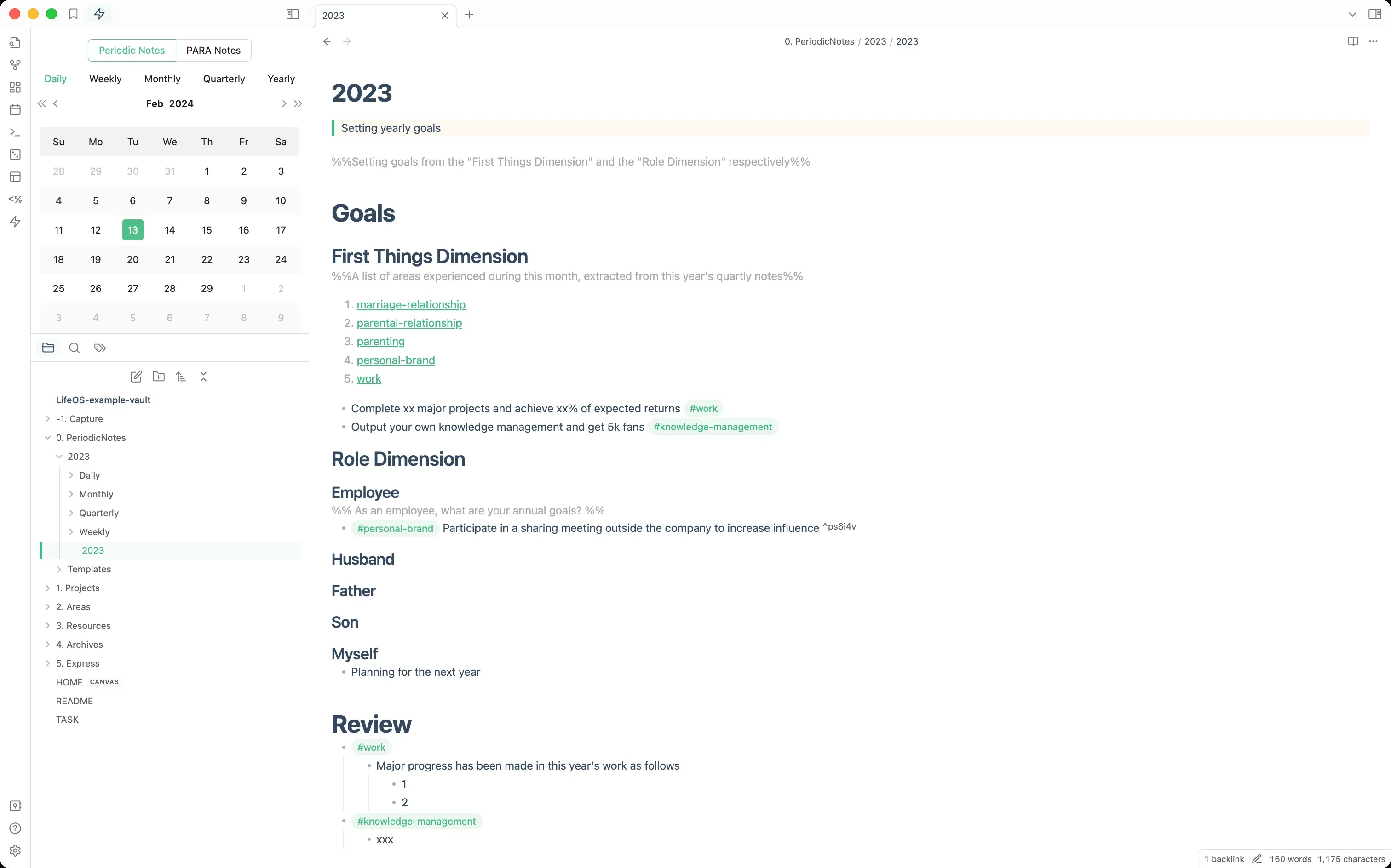
Annual Notes
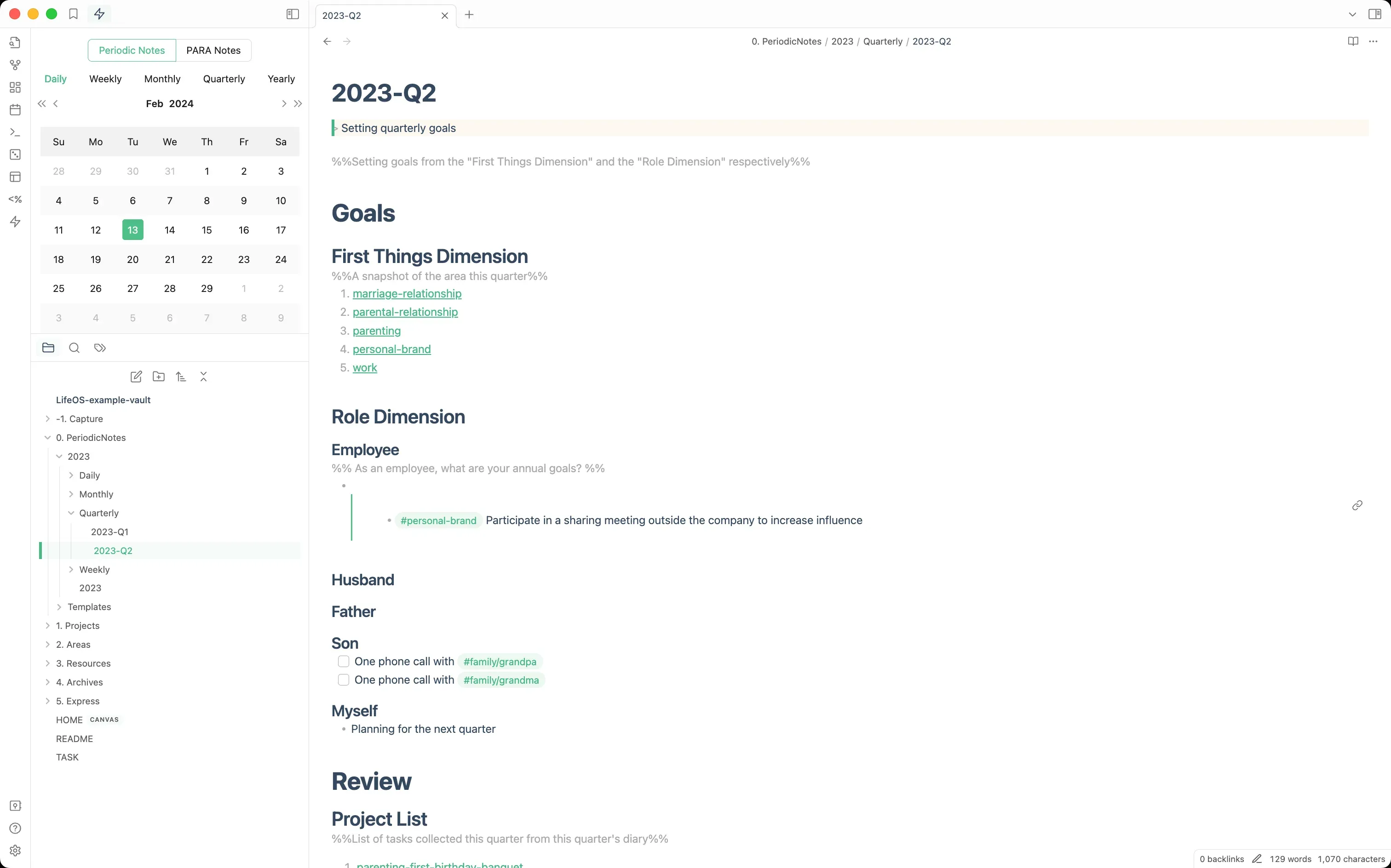
Quarterly Notes
Short-term Notes
With clear goals, in "Monthly Notes" and "Weekly Notes," we can naturally decompose the goals set in "Annual Notes" and "Quarterly Notes," focusing on short-term "Task Management" from the bottom-up!
The practice is to open "Annual Notes" and "Quarterly Notes" at the start of each week and month and plan tasks for "this week" and "this month" against your set goals.
Short-term Notes Example
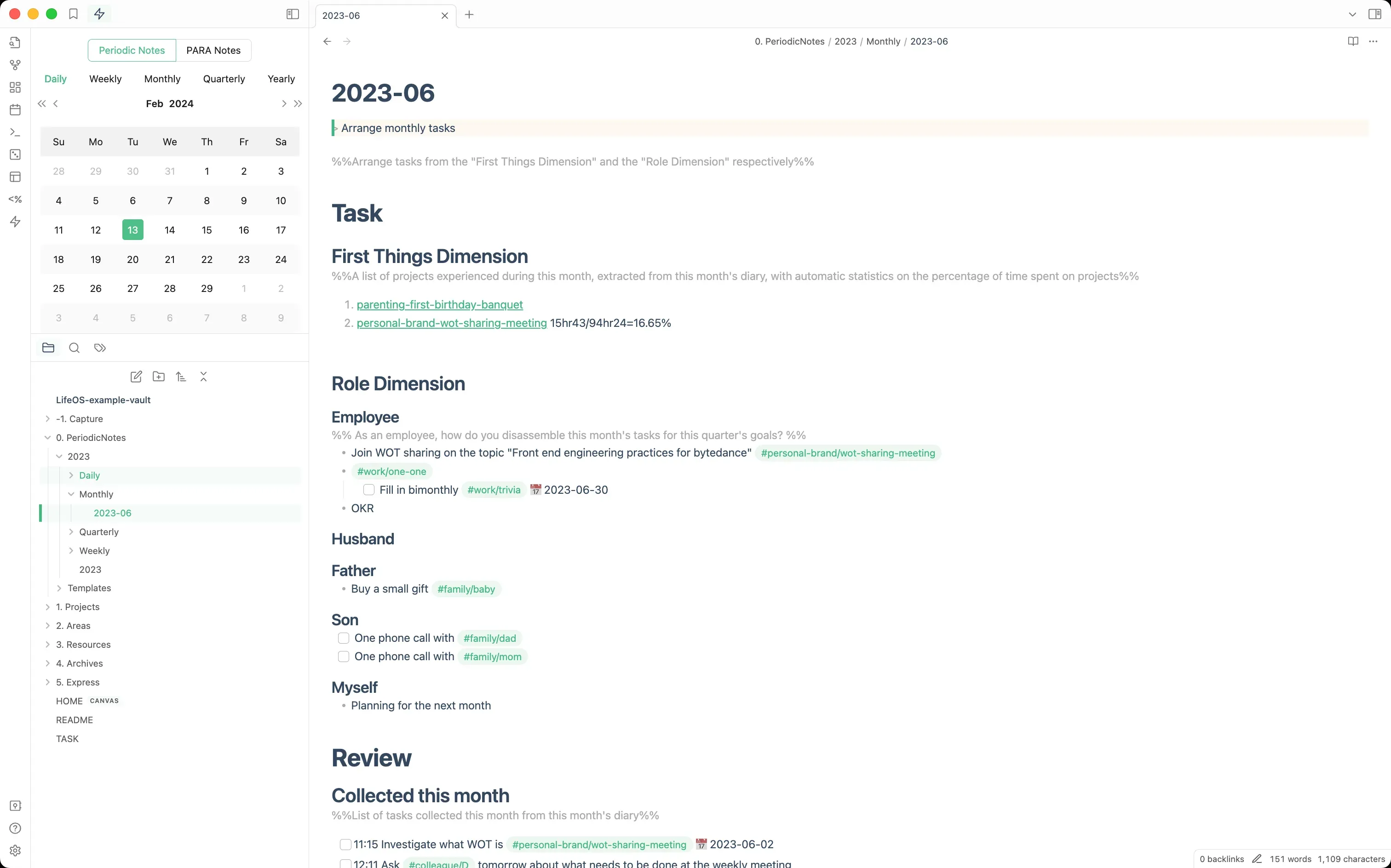
Monthly Notes
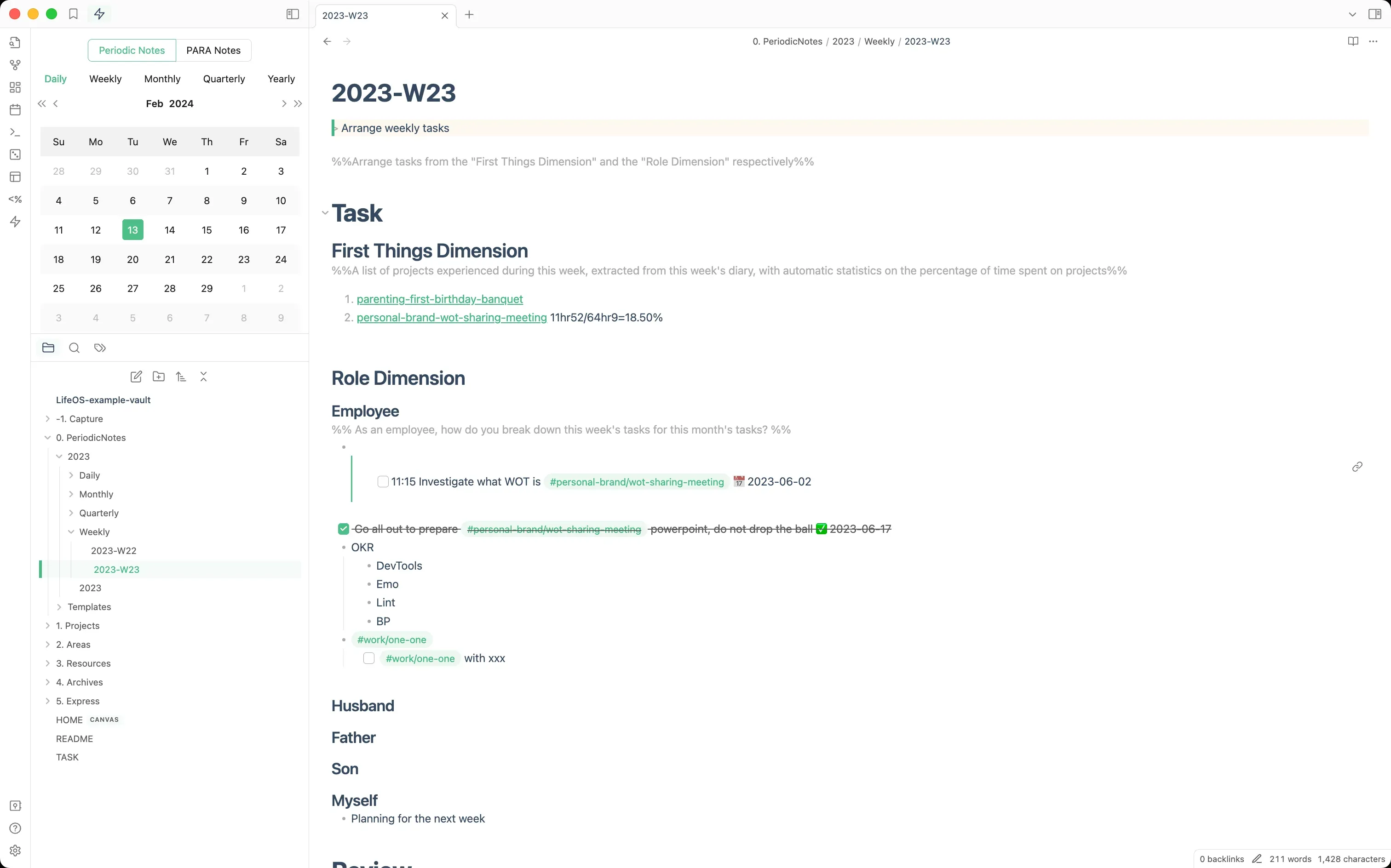
Weekly Notes
Daily Notes
Daily notes, also known as "Diary," is what I usually use to:
- Record anytime, anywhere, so it can be indexed by "tags" in "Knowledge Management" *README.md files.
- Capture thoughts and insights for self-awareness.
- Track project time to ensure focus on projects.
Daily Notes Example
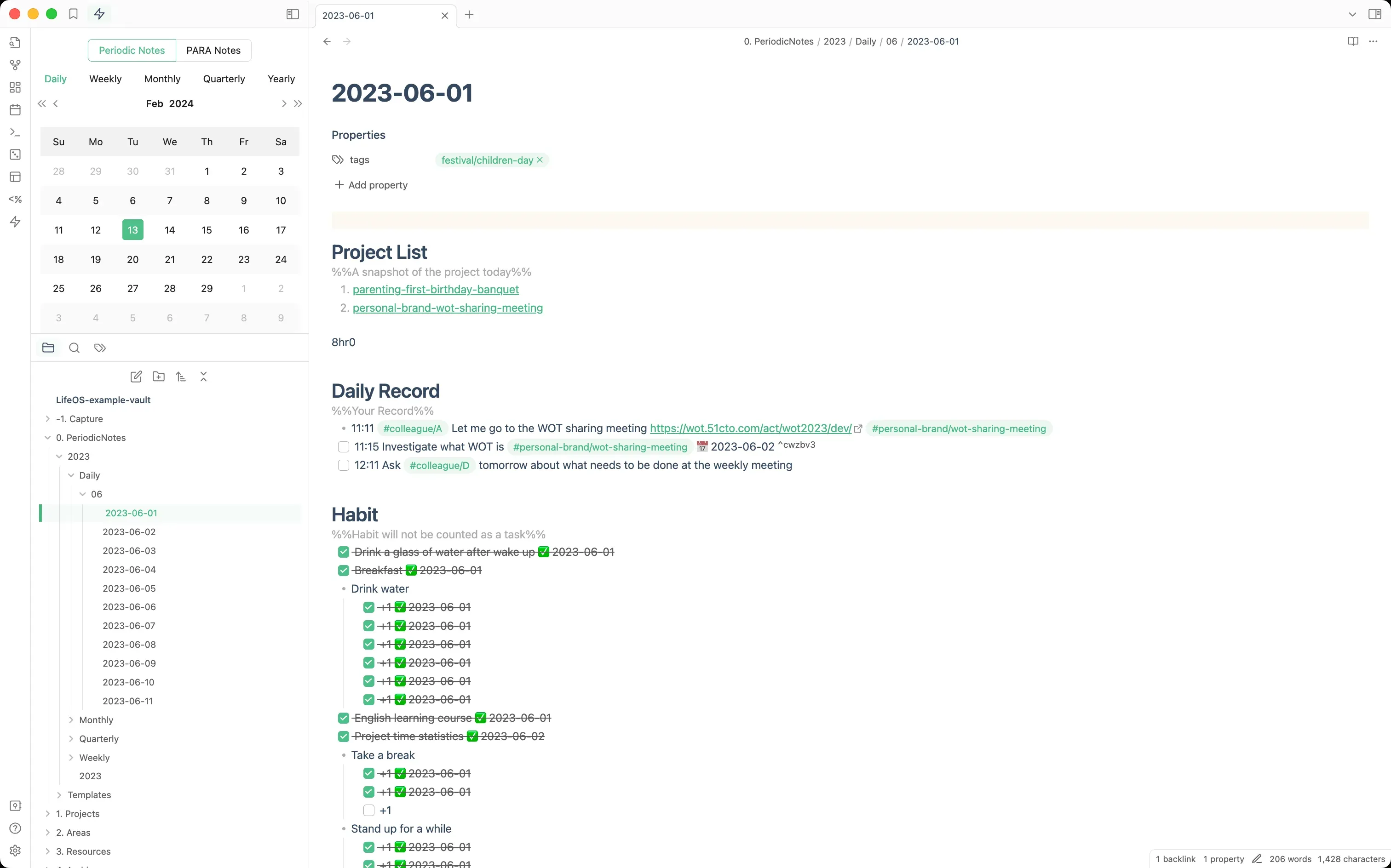
Diary
Summary
These two systems create two contexts which help me to stay focused:
- The time-based periodic notes system, where upon reaching a certain time point, you work based on the corresponding periodic notes, with sufficient context in the notes to manage "tasks," "goals," and "time" in relation to the time dimension;
- The topic-based PARA notes system, where when I want to research a topic, I work based on the corresponding topic's index
